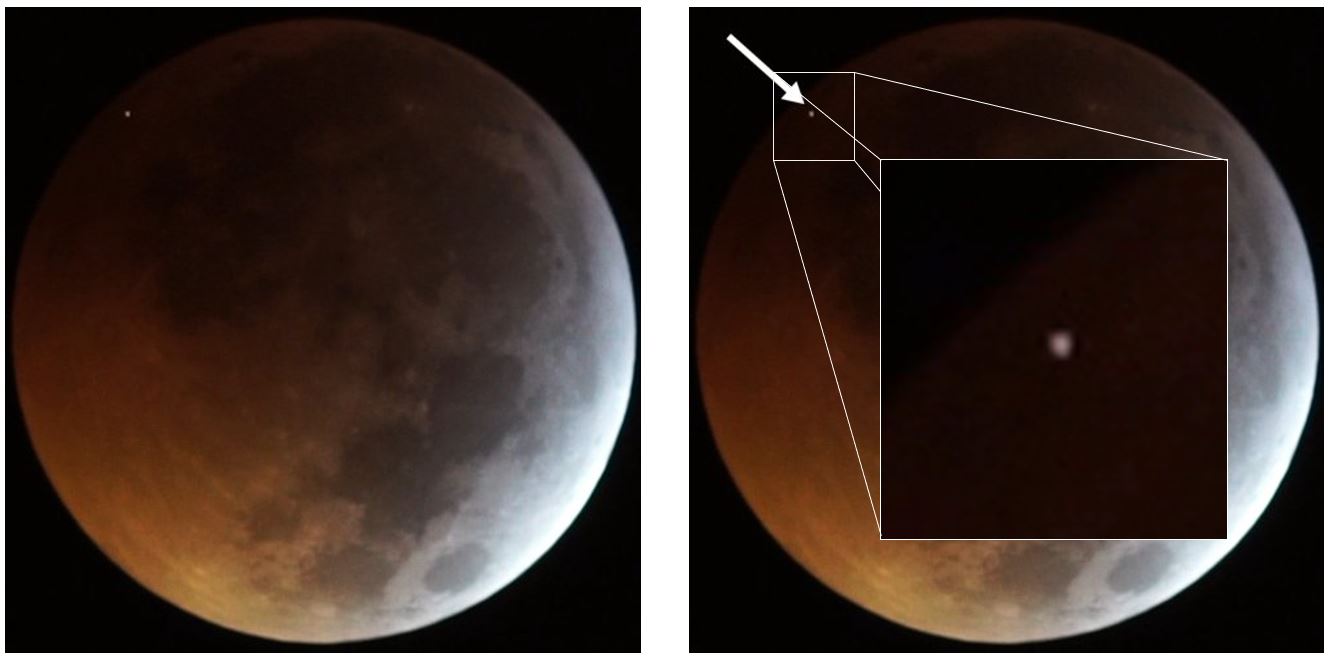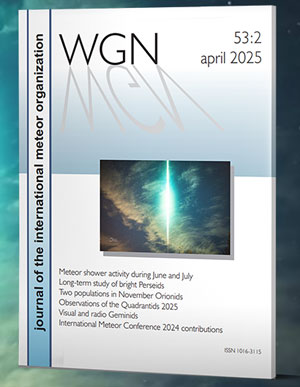On 2019 January 21, during the total lunar eclipse, a brief flash was recorded on the South-Western quadrant of the Moon. The flash was captured in the framework of the MIDAS survey (Moon Impacts Detection and Analysis System), which is being conducted by two institutions in Spain: “Universidad de Huelva” and “Instituto de Astrofisica de Andalucia”. This survey employs an array of telescopes endowed with high-sensitivity cameras to monitor the lunar surface. The telescopes operate at three different observatories: La Sagra (Granada), Sevilla and La Hita (Toledo). The recordings, that were obtained by means of several telescopes operating at Sevilla, confirmed that the flash was produced by a meteoroid that hit the lunar ground at high speed. When these hypervelocity impacts occur, the impactor is completely destroyed and a brief flash of light is emitted. The energy of that flash allows us to determine the characteristics of the impactor.

This is the first time that a lunar impact flash is recorded during a lunar eclipse. The event took place at 4h41m38s UT (GPS-based time), and lasted about 0.3 seconds. The analysis of this impact flash is still in progress, but some rough preliminary estimates have been performed about the circumstances of the collision. According to this preliminary analysis, the most likely situation is that the impact was produced by a sporadic meteoroid of cometary nature. The impact velocity in that case would be of around 17 km/s, and the object would have a mass of around 10 kilograms. The diameter of the meteoroid would be of about 30 cm, and the fresh crater generated during the collision would have a diameter of around 7-10 meters.
The video below shows footage of the impact flash as recorded by one of the MIDAS telescopes operating at Sevilla: https://youtu.be/FNvfBCu-jjI
The following video was obtained by a very high-sensitivity camera operating in the framework of the MIDAS survey, and the impact sequence can be seen much more clearly: https://youtu.be/wnf5rHypPSo
Credits of the article goes to Prof. Dr. Jose Maria Madiedo (Universidad de Huelva)




 You saw something bright and fast? Like a huge shooting star? Report it: it may be a fireball.
You saw something bright and fast? Like a huge shooting star? Report it: it may be a fireball.  You counted meteors last night? Share your results with us!
You counted meteors last night? Share your results with us!  You took a photo of a meteor or fireball? You have a screenshot of your cam? Share it with us!
You took a photo of a meteor or fireball? You have a screenshot of your cam? Share it with us!  You caught a meteor or fireball on video? Share your video with us!
You caught a meteor or fireball on video? Share your video with us!